
|
Broad Ripple Random Ripplings

The news from Broad Ripple
Brought to you by The Broad Ripple Gazette
(Delivering the news since 2004, every two weeks)

|
| Brought to you by: |

|

|

|

|

|

|
Converted from paper version of the Broad Ripple Gazette (v12n19)
Everything you always wanted to know about the canal...Part Two
posted: Sept. 18, 2015
Over the years we have received numerous calls and emails with questions about the canal. We answer them individually, but now we have decided to write it all up in one comprehensive series of articles. This series will almost certainly raise even more questions from our readers. Send 'em in!
From the archives, a construction drawing of the Broad Ripple Dam showing additions to the structure and remediation over the years.
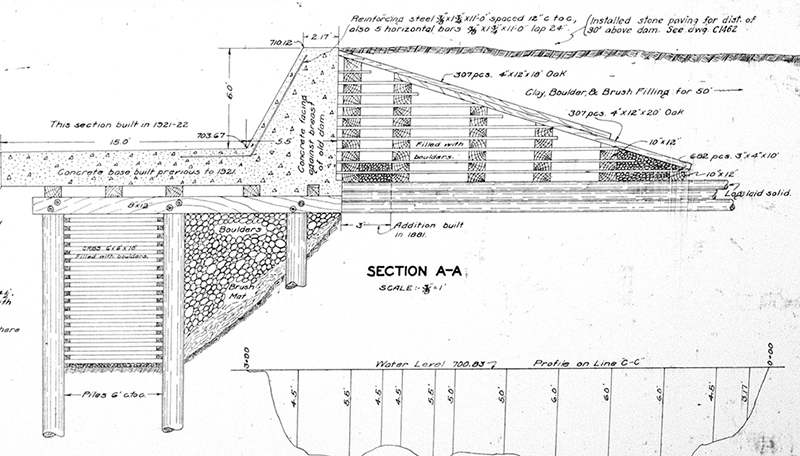
Back on topic, the dam is a 300 foot wide, 8 foot tall timber structure. According to Ed Malone, the dam was built with untreated timbers and was designed to allow some water to flow through the dam, keeping the timbers from decaying.
The timber structure was constructed and back-filled with ballast that includes rock and soil (see cross section diagram above).
That original 1836 timber structure is still intact. Several additions have been installed over the past 185 years, including a concrete facing and base built prior to 1921, and a concrete apron downstream of the dam added in 1925. The concrete structures were refurbished in 1959 and again in the summer of 2013.
Taken during the 2013 dam remediation.
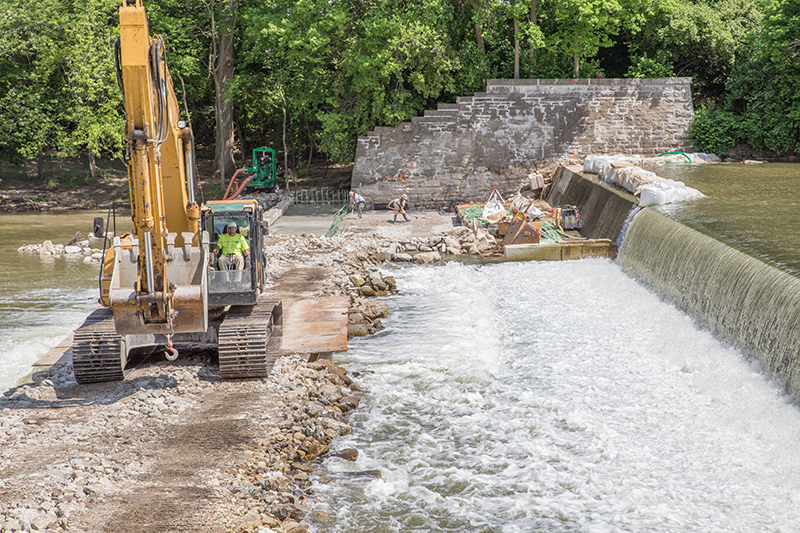
The dam is located at about 65th Street. It backs up the water flowing south down the White River (actually north in this short oxbow section of the river) and forces it into the man-made canal, about 50 feet upstream. Just to the east of the crumbing concrete bridge over the canal at Westfield Boulevard are the headgates of the canal. The headgates are a series of adjustable shut-offs. The tall rods attached to the gates can be seen sticking up as you drive past on Westfield. They can be adjusted to open the flow from the river or to shut it off. The gates have been retrofitted to allow for remote control of the water flow entering the canal. In my tour of the White River treatment facility at 16th Street, plant operator Leah Samson showed me the computer monitors and controls she uses to maintain the desired flow to through the canal to the plant. The plant operator checks the level of the canal at the headgates and can open or close the gates as needed, all from the control room at 16th street.
canal headgates from Westfield
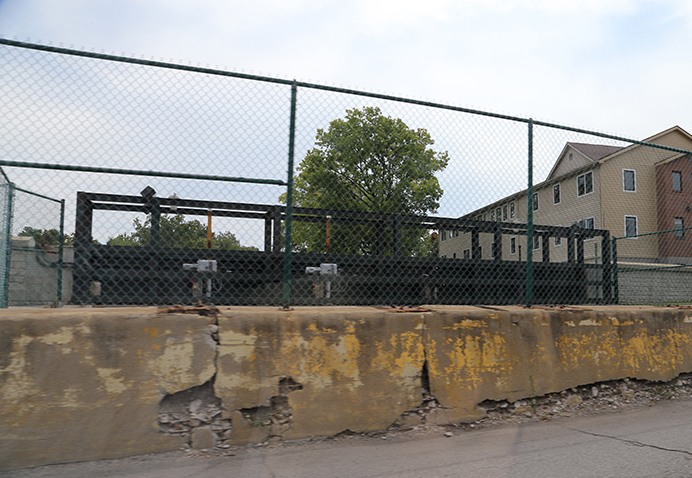
The river side of the start of the canal, just upstream of the dam, taken in 2002.
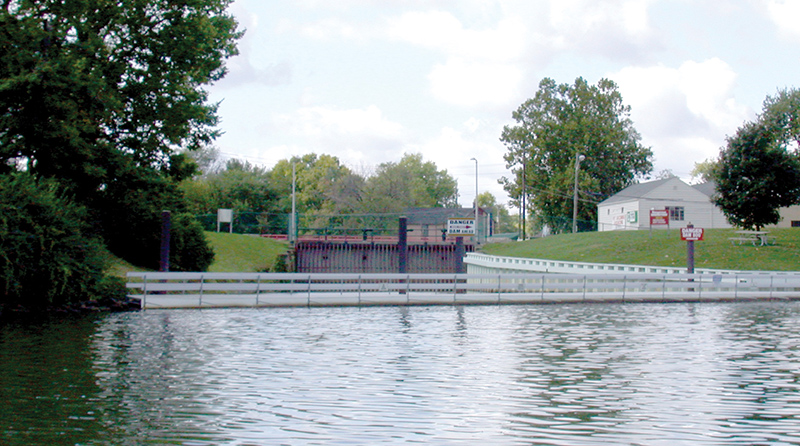
In 2008/9 the Army Corps of Engineers raised the gate operators so they would be the same height as the new levee system. This involved temporarily bypassing the headgates with large pipes. You can see photos of that at www.broadripplegazette.com in Volume 5 #4 and #10, and in Volume 6 #13.
From 2008 - This shows the start of the canal, the bars that trap logs from entering canal (below the crane), the garage for the patrolmen (to the right of the crane), the pumps that diverted the water during the levee work (lower right).
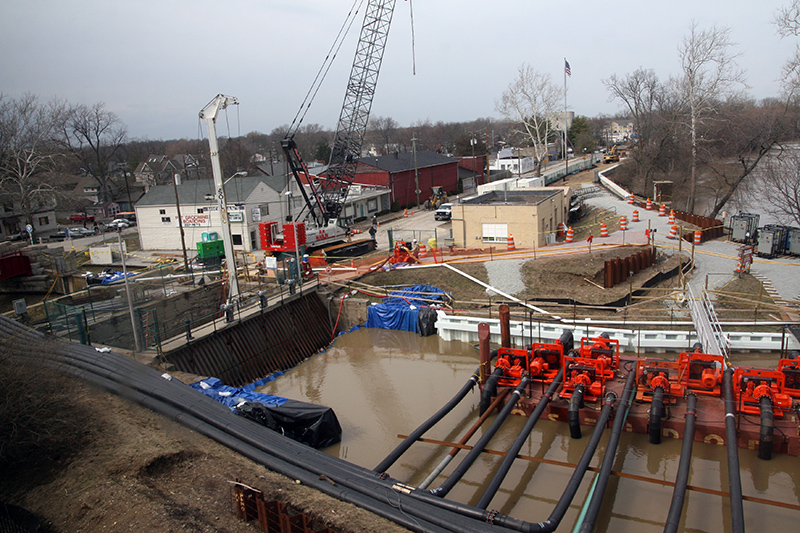
There is a set of bars about 5 inches apart across the headgates to keep large objects, like branches, from flowing into the canal.
The water company building directly to the north of the headgates is a two-bay garage. This stores equipment used by the patrolmen. These patrolmen report to Edwin Morris and monitor the canal daily. They check for any trouble, such as objects in the water, chemical spills, heavy weeds, trees down, holes in the tow path, and they check the manual staff gages that show the level of the water in the canal. Most of the gages along the length of the canal have been replaced with automatic, remote-readable gages. These are housed in aluminum boxes on several canal bridges. An optical sensor determines the water level and reports it to the plant operator at 16th Street. It is critical for the plant operator to maintain the proper levels in the canal to keep the flow sufficient to supply the treatment plant. In the winter the flow is increased to control ice that can form on the surface. If ice is allowed to build up, it can crack and break apart creating an ice dam that could impede the flow. To eliminate the difficult task of manually clearing the canal of an ice dam, the flow is increased to keep the canal from freezing.
End of Part Two
Remote, solar-powered canal level gage on the bridge at Kessler Boulevard.
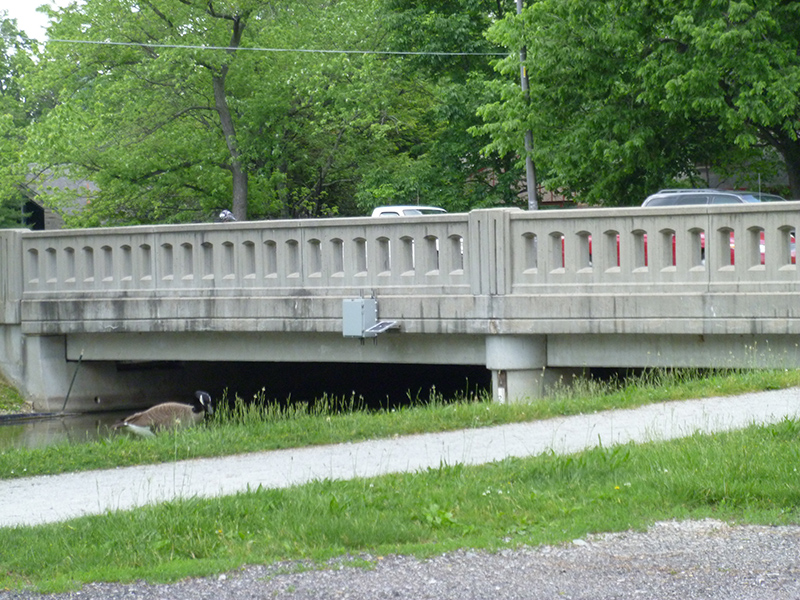
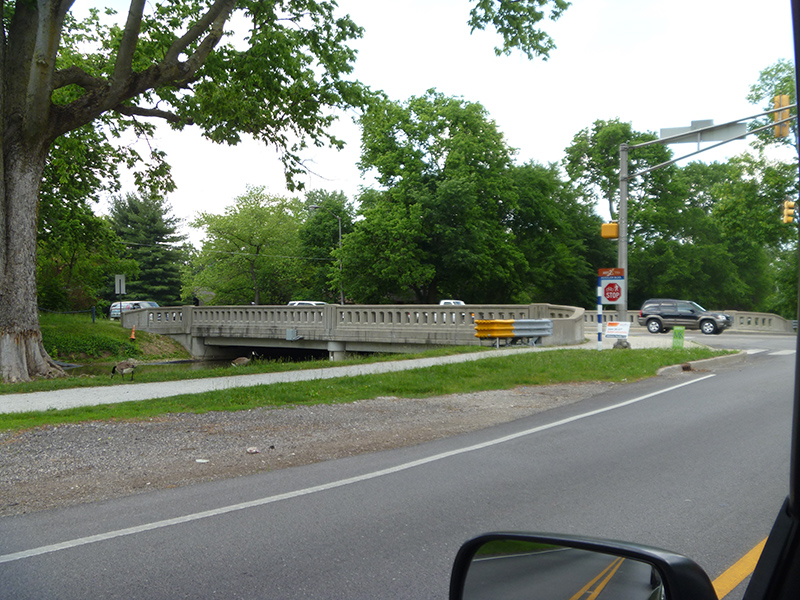
alan@broadripplegazette.com

|

|

|
| Brought to you by: |

|

|

|
| Brought to you by: |

|

|

|


